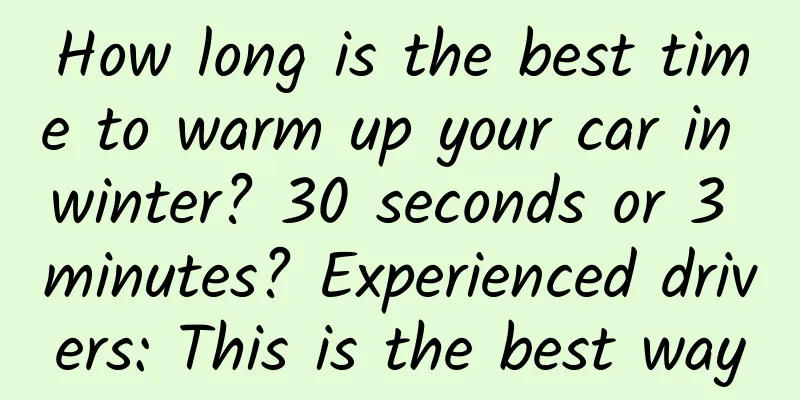UI operations in the main thread are not absolutely safe

|
When we first started learning iOS, we were told that UI operations must be performed on the main thread. This is because UIKit methods are not thread-safe, and ensuring thread safety requires a lot of overhead. So the question is, is it safe to perform UI operations in the main thread? Obviously, the answer is no! In Apple's MapKit framework, there is a method called addOverlay, which requires the code to be executed not only on the main thread but also on the main queue of GCD when it is implemented at the bottom layer. This is an extremely rare problem, but someone has already encountered this problem when using ReactiveCocoa and submitted an issue. Apple's Developer Technology Support admitted that this is a bug. Regardless of whether this is a bug or a legacy design, or whether it is just a quibble, in order to avoid falling into the same trap again, I think it is necessary to analyze the cause of the problem and the solution. GCD knowledge review In GCD, the main queue can be obtained by using the dispatch_get_main_queue() function. Calling the dispatch_sync() method will synchronously submit the task to the specified queue. Note the difference between queues and threads. There is no "ownership relationship" between them. When we submit a task synchronously, we first block the current queue, and then wait until the next runloop to execute the block in the appropriate thread. Before executing a block, it will first look for a suitable thread to execute the block, and then block the thread until the block is executed. The rule for finding threads is: any block submitted to the main queue will be executed in the main thread. Under the premise of not violating this rule, the document also tells us that the system will automatically optimize and execute the block in the current thread as much as possible. By the way, the sufficient condition for GCD deadlock is: "repeatedly submitting blocks to the current queue synchronously". In principle, the cause of the deadlock is that the submitted block blocks the queue, and after the queue is blocked, dispatch_sync() can never be completed. It can be seen that this has nothing to do with the thread where the code is located. Another example can also prove this point. In the main thread, a block is synchronously dispatched to a serial queue. According to the principle of thread selection above, the block will be executed in the main thread, but it will not cause deadlock:
Cause Analysis After all this talk, let's get back to the bug described earlier. Now we know that even if the code is executed in the main thread, it is likely not running in the main queue (and vice versa). If we call MapKit's addOverlay method in a subqueue, even if it is currently in the main thread, it will cause a bug because the underlying implementation of this method determines the main queue rather than the main thread. Thinking further, sometimes in order to ensure that UI operations run on the main thread, if there is a function that can be used to create a new UILabel, in order to ensure thread safety, the code may be like this:
Strictly speaking, this way of writing is not 100% safe, because we cannot know whether the relevant system methods have the above bugs. Solution Since the block submitted to the main queue must be run in the main thread, and thread switching in GCD is usually caused by specifying a queue, we can make a more rigorous judgment, that is, to judge whether it is in the main queue instead of whether it is in the main thread. GCD does not provide an API to make corresponding judgments, but we can find another way to use the dispatch_queue_set_specific and dispatch_get_specific methods to mark the main queue:
Use the isMainQueue method instead of [NSThread isMainThread] to get better safety. References 1.Community bug reports about MapKit http://t.cn/RtxivSc 2.GCD's Main Queue vs Main Thread http://t.cn/RthOawx 3. Similar pitfalls encountered in ReactiveCocoa http://t.cn/RtxJFRX 4.Why can't we use a dispatch_sync on the current queue? http://t.cn/RtxJgPi |
<<: RecyclerView implements sliding deletion and dragging functions
>>: Android Studio template file group
Recommend
Singularity iS6 will be launched at the end of the year with a pre-sale price starting at 200,000 yuan. The OEM factory is JAC Motors, just like NIO.
It has to be said that in the era of mobile Inter...
Autonomous driving technology brings the moral dilemma of machines forward. How should algorithms choose between life and property?
In the field of science fiction, the moral and et...
6 practical methods for writing new media operation titles!
If you want me to see it, you have to give me str...
Behind the strong push of TVOS operating system by radio and television: facing resistance from Android
Imagine if everyone’s brain had the same configur...
Have you gained weight after the Spring Festival feast?
Gaining weight in just seven days From New Year&#...
One picture to understand: What should you do if thyroid nodules are found during a physical examination?
"Nodules", "polyps", "cy...
Apple's new review rules: Apps that mention other mobile platform names in apps or metadata will be rejected
1) According to Gamasutra, Apple's developer ...
The 14th Honda China Energy Conservation Competition was successfully held
From November 25th to 26th, the 2023 14th Honda C...
"Are you sure?" Ningbo man diagnosed with breast cancer! This disease is not exclusive to women...
Do you think breast cancer is a disease only for ...
Baidu and Google are both focusing on information flow. What is the difference between them?
Almost at the same time, the two major search gia...
Why is there a fine for adding acesulfame potassium, a common beverage, into orange juice?
Recently, another piece of news related to food a...
Android Aiyouman v2.1.3 All comics free to read_Taoduoduo
Android Aiyouman v2.1.3 All comics free to read_T...
Is TikTok worth buying without the algorithm? Technology experts: It will be difficult for buyers to replicate its magic
This article is reprinted with permission from AI...
Apple will allow "reader" apps to provide external links next year, which has been questioned by many developers
Yesterday, Apple officially announced that starti...
Why does "Hua Xizi" combine "online + offline" marketing?
" Hua Xizi " was born in Hangzhou, Chin...









